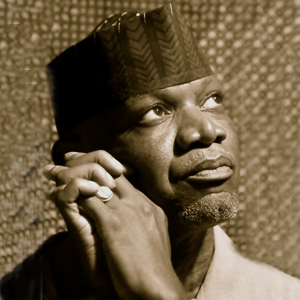Mansa Mussa
 What is your primary artistic medium?
What is your primary artistic medium?
My primary artistic medium is visual art. My process encompasses drawing, photography, collage, mask making, mixed media, three dimensional art, and iPadology (abstract photography using the iPad).
How did you get started as a teaching artist?
I started working as a Teaching Assistant in the Open Writing Lab at Jersey City State College in 1979. The following year I taught photography during a Summer Youth Employment Project for the Black Organization of Students at Rutgers University in Newark, and later that year in December I taught my first traditional African Dance Class at the same location.
What led you to Creative Aging?
My father had Alzheimer’s and I found that he could concentrate for short periods of time if I gave him simple instructions for creating art projects. I noticed that he would relax while working on the projects. That experience led me to working with independent seniors in residencies, museums, senior centers, and acute care facilities for the past ten years.
Why do you think working with older adults is important?
I love teaching older adults, I refer to them as Sensational Seniors. They have seen the process of life and death, wars, The Great Depression, and the advent of new inventions. They are always interested in learning things they don’t know, and are prepared for new adventures.
Many of them believe that the work I do with them is a challenge, and they’re right. I always give them assignments that are challenging. And they are also the funniest group of students I teach. They still insist on calling me Mr. “M” even though some of them are old enough to be my parents, aunts and uncles.
What has been the biggest surprise in working with older adult learners?
The biggest surprise is that they are as eager to learn as any other segment of the population I teach. They take a particular joy in learning and executing new ideas and using tools and techniques that they might not have been exposed to before.
What skills are most important when working with older adults?
Patience and a willingness to alter your approach to teaching when it is necessary. Each person learns at a different rate, and you have to be willing to adapt your teaching technique to each person’s skill level.
What have been your biggest challenges? How do you respond?
I think the biggest challenge is managing individual personalities in a group setting. When working with a group you may encounter personalities that don’t mesh and you have to give them room to work with their personal alliances and friends.
What advice would you give someone that wants to do this work?
Relax, have fun, and be prepared to listen to great stories. Don’t go into the work with preconceived notions about what they can or cannot do, and remain open to all possibilities.
Tell us a short story from one of your classes that demonstrates the benefits of creative aging for participants.
One of my students at the Newark Museum’s Seeding Vitality Arts Collage Workshop had been going through a life-altering situation just prior to the start of the class. Although I knew her, I didn’t know about her situation.
Whatever project we created in class, she would take additional materials home and create an alternate pieces and bring them in. During our end-of-session exhibit she took a special pride in talking about her work to family and friends who attended the event.
She told me weeks later that her experiences in the workshops had served as a balm, a healing for her life, and that the workshops had come at just the right time. They provided a sense of solace and the opportunity to explore her imagination in and outside the realm of the classroom. She has continued to take additional classes with myself and other teachers.
What are your current and upcoming projects?
I contributed an iPadology image to illustrate Marilyn Nelson’s poem “It Helps to Look at Old Front Page Headlines” for a new book entitled We Rise, We Resist, We Raise Our Voices. The book will be published by Crown Books for Young Readers in September 2018.
The Monmouth Museum is presenting the exhibition “Cuba Today: Through the Eyes of Twelve Photographers,” March 18 – May 20, 2018. The exhibition features the works of 12 photographers, including myself. I’ve been traveling to Cuba for the past 30 years, and my six pieces in the exhibit focus on images taken from 2009-2017.
On Saturday, April 16, 2018, I will present my photo-documentary, “The Art of Dance,” at Amherst College’s symposium, “African American Dance: Form, Function and Style!”. The documentary features my 40-year collection of black and white dance photographs, collages, shadow boxes, frozen tableau’s and iPadology images.
Thank you Mansa, for your wonderful work with Lifetime Arts.
Check out Mansa’s Teaching Artist Profile on Lifetime Arts’ Roster.
Search the Roster to find qualified Teaching Artists in your area.

